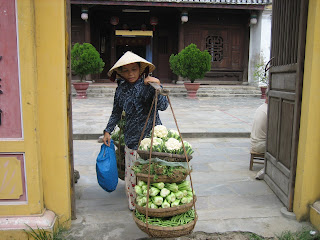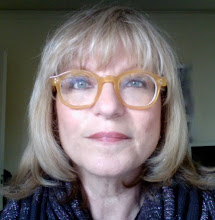
We never thought before we left home that we would tire of Vietnamese food, but so far we haven’t been that impressed. Hanoi style food is quite bland, using a lot of herbs for flavor, but not much else. We had the famous Cha Ca, a local specialty that consists of small pieces of fish sautéed in a pan with oil and turmeric and lots of herbs, chief among them dill. The sizzling pan is put on your table on a burner and you serve yourself, putting the fish and herbs over rice noodles, seasoning it in the bowl with fish sauce made slightly spicy by the addition of sliced red peppers. These peppers, while hot-ish, can’t hold a firecracker to Thai chiles. Our best food in the north of Vietnam was on the boat in Halong Bay, where we were served fabulous fresh crab and prawns several times a day.
Saigon food is spicier than that in the north and our lunch of deep-fried soft shell crab and crab spring rolls in a local joint was delicious. The proprietor pulled out the lone menu in English, with pictures, to allow us to choose. The condiments included fresh chiles, bottled chili sauce, nuoc mam mixed with chiles, sugar and vinegar, a selection of lettuce and herbs, cold rice vermicelli, and soy. Yum!
The highly praised Hoi An specialty, cao lau, a noodle dish supposedly made authentically only with Hoi An well water, failed to impress either of us. We had a cooking class one night in one of the restaurants however and learned to make some quite tasty dishes. Now all we need is a reliable source for banana leaves.
Cambodian food was not exceptional, and while we had a good meal in a local restaurant in Phnom Penh our first night we found ourselves eating most of our meals at our hotels, where the food was excellent. We liked Laotian food, which is much like Thai and quite spicy for the most part, but after several days of it in Luang Prabang we took advantage of the several good Western restaurants in Vientiane.
A word about hotel breakfast buffets: ohmigod. Breakfast has been included in all of our room rates and we have been unable to simply order toast and coffee. Every day we tell ourselves that we’re going on a diet as soon as we get back. Gene, who was quite svelte when we left, now has a cute little food baby. He had some suits made in Hoi An and had to tell the tailor to assume a smidgen smaller waist than he was offering to the tape measure. As for Shelli, let’s just drop the subject. We’ll be making sacrifices to Dr. Atkins on our return.



















